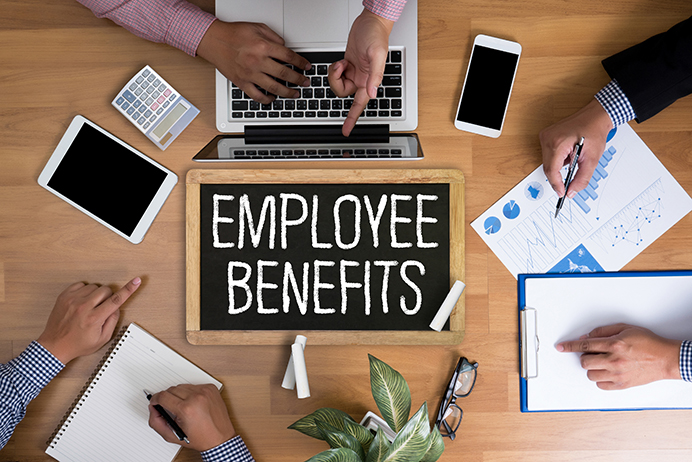What Employers Need to Know About Job Burnout
In the previous post in this 4-part series, workforce sustainability expert Bob Merberg tackled job design and its impact on employee well-being. In this post, we delve into what drives employees and factors that contribute to burnout. Because today's employees are experiencing job burnout in epidemic proportions.
A First-Hand Account of Burnout
In his Beyond Health Habits webinar, Merberg recalls one company that hired him to help them with their wellness program. This client was interested in conventional matters such as health risk assessment, health screening, and an onsite wellness center. But Merberg wanted to get a first-hand look at the company’s culture, so they invited him to one of their critical conversation workshops.
During this workshop, he was paired with the director of organizational development, who also spearheaded the program as part of the employee engagement initiative he’d been assigned to. After their role-playing activity on learning units, Merberg told the director:
"This could be a really important element of your company's wellness program. We can integrate it and use some stress and other wellness metrics to measure the program's benefit on wellbeing."
The director looked at Merberg as if he grew a second head and kind of snarled this response: “I don’t see the connection,” before turning away to make it clear that he did not want to engage in the critical conversation.
What exactly does this reaction imply? Let’s start with the definition of burnout and from there, you’ll start to see the implications of this attitude on employee well-being.
What is Burnout?
Burnout is a psychological syndrome that commonly presents as physical exhaustion. But emotional exhaustion may also manifest as cynicism, which is tied to a “lack of self-efficacy." Simply put, self-efficacy is your confidence in your ability to perform a task. And your confidence has an impact in succeeding at a task. A lack of self-efficacy is that feeling of “I can’t make a difference.”
In short, burnout is a combination of exhaustion, cynicism, and lack of self-efficacy.
It’s also an experience that results from chronic job stressors. Burnout manifests among individuals in various jobs, particularly those in human service jobs such as customer service and food service. It’s also common among professionals like lawyers, prison guards, and those in creative jobs. You don’t have to love what you do to burn out.
Burnout occurs among employees of all ages, those in different stages of their careers, and occurs both in men and women. It's extremely common among those who work with people in some capacity, which describes most work-related interactions with clients, patients, or co-workers. All these factors are an important part of burnout.
And, according to a recent Stanford study, burnout can be deadly.
Engagement is the Flip Side of Burnout
Employee or job engagement, which is referred to as “work engagement” in research, is defined as a fulfilling work-related state of mind. It manifests as vigor, absorption, and dedication. Employees who are engaged in their work have high levels of energy. Their enthusiasm allows them to immerse in more work activities.
The Connection Between Engagement and Burnout
To better understand their relationship, engagement has more to do with motivation and burnout relates more to health.
If your main interest in employee well-being focuses on health, then look at the physical and mental problems linked to burnout. One study showed that employees with high burnout levels are twice at risk for developing musculoskeletal pain compared to those without burnout. Other linked conditions are cardiovascular disease and a wide range of both mental health and psychosocial problems.
While the relationship between engagement and health is less clear, engagement is linked to the following productivity facets:
- Creativity
- Teamwork
- Job performance
- Various business outcomes
Burnout, on the other hand, is associated with these negative employee-related occurrences:
- Higher absenteeism
- Turnover
- Impaired performance
- Lack of teamwork
What the Research Says About Burnout
For employers, prevention is more effective than treatment. Burnout and engagement are important issues for employee well-being and for business outcomes. Christine Maslach, a leading American researcher on burnout and the author of The Truth About Burnout, highlights in her work that burnout has to do with the workplace environment and the work. These two factors include the interactions people have at work, more than it is a personal issue with the employee.
From Maslach's book:
Imagine investigating the personality of cucumbers to discover why they had turned into sour pickles without analyzing the vinegar barrels in which they had been submerged.
To understand burnout and engagement, you can’t focus on the individual employee. And this is a difficult concept for employers to embrace. When addressing burnout, most employers recommend an employee assistance program (EAP) or coaching. Sometimes, the employee gets saddled with a negative performance review or are encouraged to participate in resilience programs. Unfortunately, these are not the proper solutions because they only deal with symptoms and not with causes.
According to Maslach, the biggest factors that determine burnout and engagement are:
- Autonomy
- Fairness
- Workplace community or social support (in the form of a lively, attentive, and responsive community)
The Role of Values
Misaligned values also contribute to burnout. For example, if a tobacco company hires a strongly anti-tobacco person, it’s likely that no matter how high the compensation, how great the benefits, how nice the boss, how fancy the office, or how robust the health and fitness programs are, the person may never be fully engaged. Their risk for burnout is heightened due to a mismatch in values.
An opposite example would be a company that makes outdoor gear. This business is at the forefront of environmental activism. and is light years ahead of their time in work-life balance. They also hire people who love the outdoors. As a result, their employees’ high work engagement and low burnout have yielded high growth and low turnover rates. Both employee and organizational values are in sync at that company.
How to Reduce Employee Burnout
Maslach enumerates three ways to reduce burnout:
- Prevention is better than treatment
- Building engagement is the best way to prevent burnout
- Organizational intervention is better than individual intervention
Maslach’s research also shows that stress at work comes from job demands exceeding employee’s resources and adding resources that can cause burnout.
Intervention at the U.S. Department of Veterans Affairs
In response to employee feedback that low levels of civility affected their job satisfaction, the VA took action. In 2005, a VA-wide culture change initiative was launched known as Civility, Respect, and Engagement in the Workplace (CREW). It served as a burnout intervention and has since been utilized by over 1,200 VA workgroups to establish a culture of respect and civility in their organization (unlike the director mentioned at the beginning of this post).
Remain Attentive
The most important thing an employer can do for employee well-being? Actively listen. You need to genuinely take an interest in and value the employees’ well-being. Individual interventions such as recovery and vacation also play a supplementary role in this goal. Stress management and resiliency programs come in with these interventions.
For employers, a parting thought. Preventing burnout in the first place is more effective than treatment.





